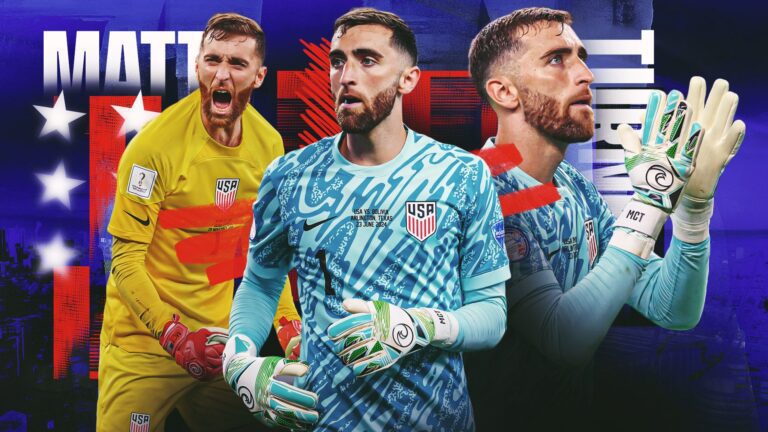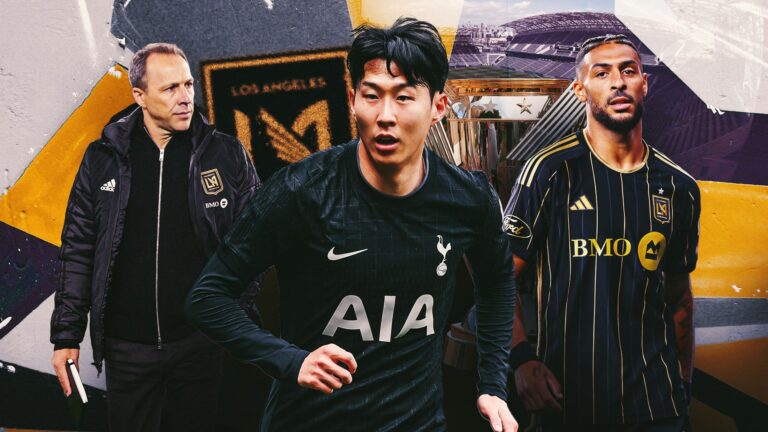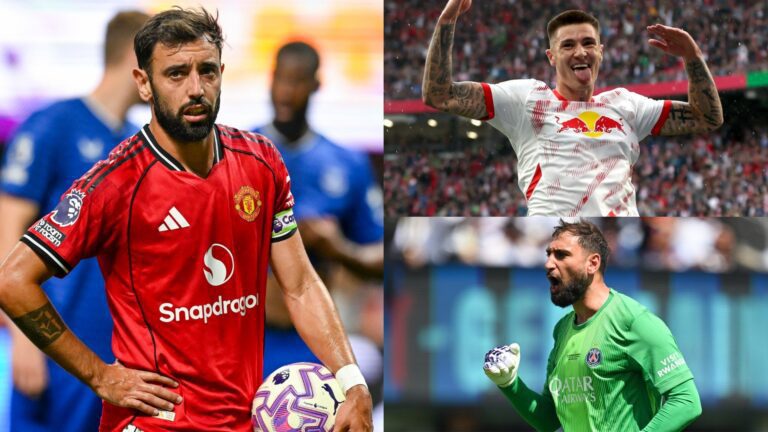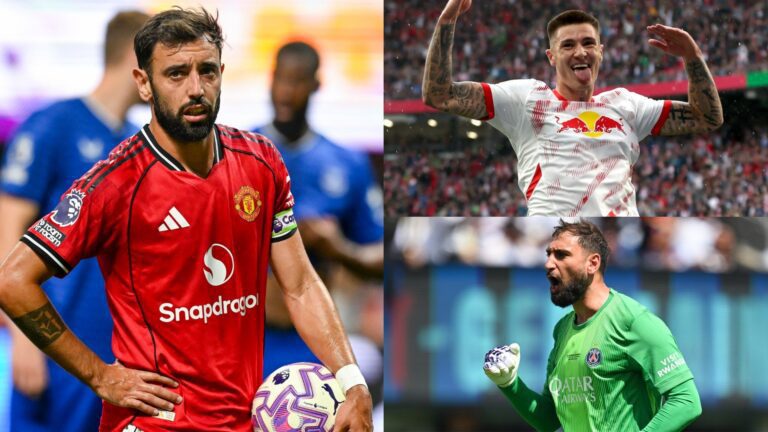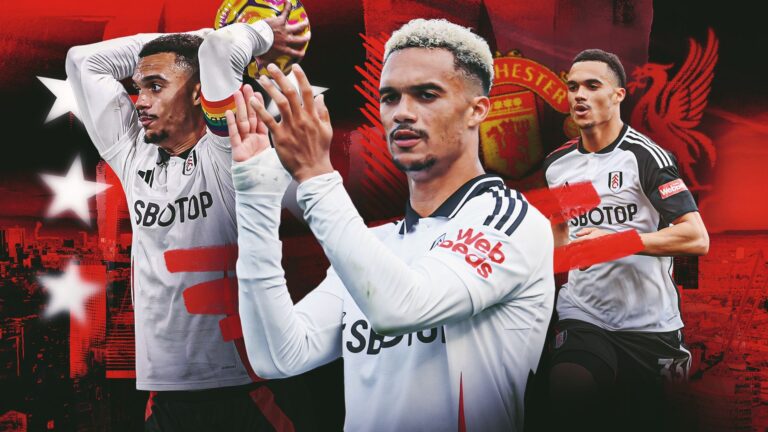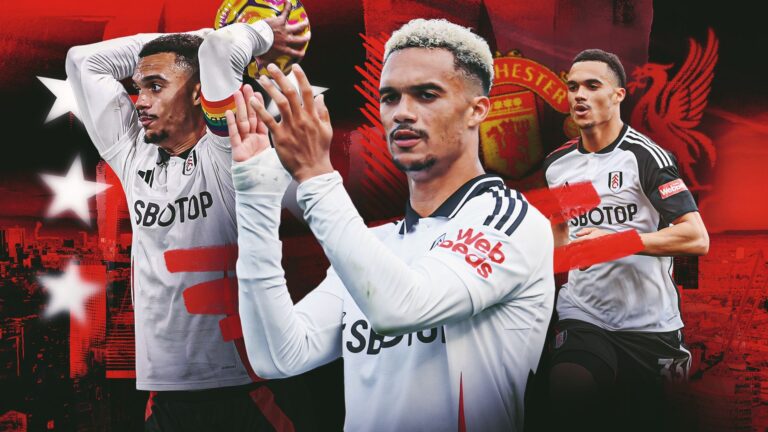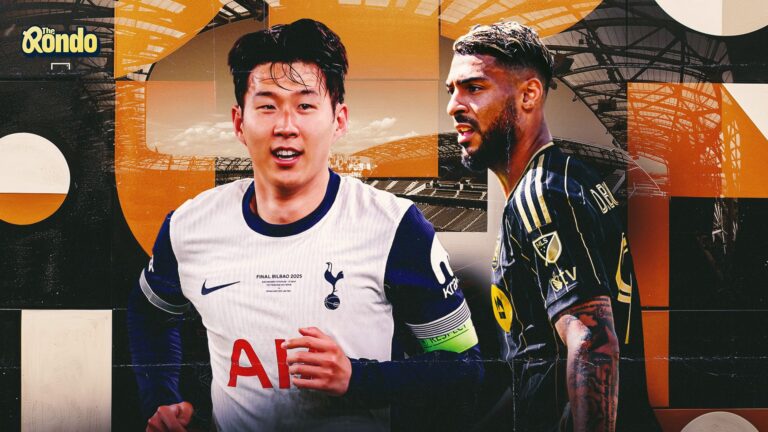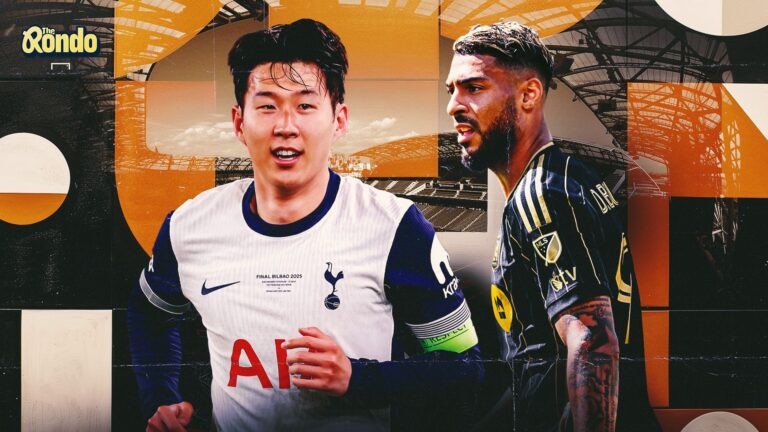Unlocking the Flanks: Why Fullbacks Could Define USMNT’s World Cup Destiny
As the 2026 World Cup looms on the horizon, the United States Men’s National Team (USMNT) faces a whirlwind of uncertainties under new coach Mauricio Pochettino. Yet, amid the doubts, the fullback roles shine as a beacon of stability, anchored by two elite talents ready to propel the squad forward-if they can stay healthy and in form.
With less than 12 months until the global showdown, the USMNT grapples with pivotal queries: Will Pochettino mold the team’s ethos to match his vision? Can they truly challenge the world’s best? While many positions remain fluid, the fullbacks stand out as a rare certainty, boasting clear frontrunners who excel in top-tier competitions. The primary hurdle? Their fitness, which has plagued the team recently.
Stars like Antonee Robinson and Sergino Dest have faced setbacks, with Robinson battling injuries during Fulham’s campaign and Dest sidelined by a lengthy ACL rehabilitation that caused him to miss key tournaments like Copa America and the Nations League. Now, as they gear up for their club seasons in Europe, optimism abounds-provided they maintain peak condition for the USMNT’s optimal lineup in 2026.
Beyond these anchors, the talent pool brims with promising alternatives who could step in during crises or emerge as future stars. Though unlikely to usurp the starters, these options signal a robust depth chart for the long haul.
Following the Gold Cup, BALLGM delves into the USMNT’s current landscape, dissecting the key positional rivalries shaping the 2026 squad. Up next: the fullback dynamics.
Previous in the Series: Goalkeepers






The Indispensable Duo: Robinson and Dest’s Dominance
Their recent unavailability has underscored just how vital these fullbacks are to the USMNT’s strategy. On the left flank, Robinson emerged as a Premier League standout last term, elevating his performance before injuries intervened. Despite the setbacks, he ranked among the top assist providers with 10, only behind stars like Mohamed Salah, Jacob Murphy, and Anthony Elanga-highlighting his dual-threat prowess in defense and attack.
Dest, conversely, brings explosive offensive flair from the right. When firing on all cylinders, he transforms matches, enabling a more fluid and aggressive approach for the team. Post-ACL recovery, fans eagerly await his reintegration under Pochettino, whose tactics could amplify Dest’s strengths and reshape the squad’s overall dynamics.
Without either, the USMNT must adapt its playbook, often resulting in diminished effectiveness-a reality that’s become all too clear in recent outings.
Reliable Reserves: Scally and the Immediate Backups
Among the alternatives, Joe Scally stands out with substantial international exposure. While he doesn’t match the starters’ versatility, his defensive solidity offers crucial reliability, especially in high-stakes scenarios or when protecting leads. However, integrating him requires tactical tweaks, which isn’t optimal. Still, he’s the prime deputy on the right, and Dest’s flexibility to shift left adds further cover for Robinson.
For more on Scally’s club form, check out his stats at Transfermarkt.
Emerging Contenders: A Mix of Talent and Potential
The competition heats up beyond the top tier, featuring a diverse array of profiles vying for spots. Max Arfsten, who started at left-back in the Gold Cup despite his natural wingback role, impressed with his forward surges-essential for a squad lacking width. Pochettino praised this during the tournament, but Arfsten’s fit might evolve as star players return.
John Tolkin served as a capable understudy, building on a strong stint with Holstein Kiel after leaving the New York Red Bulls. His blend of defensive grit and occasional attacking sparks keeps him relevant, though his club trajectory will dictate his USMNT future.
Players like DeJuan Jones and Marlon Fossey linger on the periphery, poised for breakthroughs that could secure World Cup berths.
Youth on the Rise: Future Stars in the Pipeline
Look no further than Alex Freeman for immediate promise. The 20-year-old Orlando City prospect shone in the Gold Cup, displaying attacking verve and defensive poise-save for a tough finale against Mexico. His trajectory suggests he could soon challenge for the backup right-back role, with unlimited upside ahead.
On the left, Caleb Wiley continues to develop, having shown flashes at Watford in the Championship following his Atlanta United days. Now with Chelsea, the 20-year-old Olympian has three caps and is primed for growth. Adding to the excitement is Nathaniel Brown, a dual-national talent at Eintracht Frankfurt, who has German youth caps but rumors swirl of a potential USMNT switch-potentially injecting fresh energy into the group.
For the latest on emerging USMNT talents, explore U.S. Soccer’s official site.
The Stark Reality: Depth vs. Elite Quality
In no other area is the gap between starters and substitutes more pronounced than at fullback. Robinson and Dest’s exceptional abilities drive the team’s rhythm, and their absences have repeatedly exposed vulnerabilities. Viable short-term solutions exist, and the USMNT could muddle through a tournament without one, but their aspirations would plummet without these key figures at full throttle.
According to recent analyses, teams with consistent fullback play, like England’s in Euro 2024, often advance further-underscoring the importance for the USMNT. Barring unforeseen issues, these spots remain locked down as the World Cup approaches.
How will Antonee Robinson and Sergiño Dest impact the USMNT in the 2026 World Cup?
The Role of Fullbacks in USMNT’s Evolution Under Pochettino
As the USMNT gears up for the 2026 World Cup, the spotlight is on key positions that could make or break their campaign. Enter the fullbacks: Antonee Robinson and Sergiño Dest, who are poised to be cornerstones in Mauricio Pochettino’s tactical setup. With Pochettino’s track record at clubs like Tottenham and PSG, emphasizing dynamic, attacking fullbacks, these two players align perfectly with his vision. In this USMNT fullback assessment, we’ll explore their strengths, how they complement each other, and why they’re vital for Pochettino’s World Cup ambitions.
Fullbacks in modern soccer aren’t just defenders; they’re wingers, creators, and sometimes even goal threats. For the USMNT, Robinson on the left and Dest on the right provide that balance of defensive solidity and offensive flair. Pochettino, known for his high-pressing style, will likely rely on them to stretch the field and support the attack, making them indispensable for any shot at World Cup glory.
Antonee Robinson: The Reliable Left-Back Powerhouse
Antonee “Jedi” Robinson has been a revelation for both Fulham in the Premier League and the USMNT. His journey from Everton’s academy to becoming a staple in the national team showcases his resilience and growth. In Pochettino’s system, Robinson’s speed and crossing ability will be key assets, allowing him to bomb forward while maintaining defensive duties.
- Defensive Prowess: Robinson averages over 2 tackles per game in the Premier League, making him a tough nut for opposing wingers.
- Attacking Contributions: With multiple assists this season, he’s not afraid to join the attack, fitting Pochettino’s fluid style.
- USMNT Impact: In recent qualifiers, Robinson’s overlapping runs have created numerous chances for forwards like Christian Pulisic.
What sets Robinson apart in this USMNT fullback assessment is his consistency. At 26, he’s entering his prime, and under Pochettino, he could evolve into one of the world’s top left-backs, bolstering the team’s World Cup ambitions.
Sergiño Dest: Versatility Personified on the Right
Sergiño Dest brings a unique flavor to the USMNT with his Barcelona-honed skills and adaptability. Currently at PSV Eindhoven, Dest’s ability to play on both flanks makes him a tactical wildcard for Pochettino. His dribbling and vision add an extra dimension, turning defense into attack in seconds.
- Technical Skill: Dest’s ball control and passing accuracy (often above 85%) allow him to navigate tight spaces effectively.
- Goal Threat: He’s scored crucial goals for the USMNT, including in CONCACAF Nations League matches.
- Defensive Reliability: Despite his attacking bent, Dest’s recovery speed helps him track back efficiently.
In Pochettino’s World Cup strategy, Dest’s versatility could see him switching sides or even pushing into midfield, providing the USMNT with flexible options against varied opponents.
How Robinson and Dest Fit into Pochettino’s Tactical Blueprint
Mauricio Pochettino’s coaching philosophy revolves around high energy, pressing, and width. For the USMNT, this means fullbacks like Robinson and Dest will be encouraged to overlap, create overloads, and contribute to build-up play. Their partnership could mirror successful duos like Trent Alexander-Arnold and Andy Robertson at Liverpool, but tailored to American talent.
Imagine Robinson linking up with Pulisic on the left, while Dest feeds Gio Reyna on the right. This setup not only stretches defenses but also allows midfielders like Weston McKennie to focus on box-to-box roles. In terms of Pochettino’s World Cup ambitions, these fullbacks are the engines driving the team’s transition game, crucial for competing with global powerhouses in 2026.
| Player | Key Stats (Per 90 Minutes) | Strength | Fit in Pochettino’s System |
|---|---|---|---|
| Antonee Robinson | 2.1 Tackles, 1.5 Assists | Speed & Crossing | High-pressing left-back |
| Sergiño Dest | 1.8 Dribbles, 85% Pass Acc. | Versatility & Dribbling | Attacking right-back wildcard |
This table highlights their complementary stats, showing why they’re cornerstones for the USMNT under Pochettino.
Benefits of Strong Fullbacks in Modern Soccer and USMNT Strategy
In today’s game, elite fullbacks like Robinson and Dest offer immense benefits. They provide width, which opens up central spaces for playmakers, and their defensive recoveries prevent counter-attacks-a must in Pochettino’s high-line approach.
- Enhanced Attack: More crosses and overlaps lead to higher goal-scoring opportunities.
- Defensive Balance: Quick transitions from defense to attack keep opponents off-balance.
- Team Morale: Reliable fullbacks build confidence, allowing the USMNT to play fearlessly in World Cup matches.
For Pochettino’s ambitions, these benefits translate to a more competitive squad, potentially pushing the USMNT beyond the round of 16 in 2026.
Practical Tips for Aspiring USMNT Fullbacks
If you’re a young player dreaming of emulating Robinson or Dest, here are some actionable tips inspired by their playstyles:
- Build Endurance: Train for high-intensity runs to handle both defensive and attacking duties, just like in Pochettino’s pressing system.
- Refine Crossing: Practice accurate deliveries-Robinson’s assists come from precise balls into the box.
- Develop Versatility: Work on both feet, as Dest does, to become adaptable in various formations.
- Study Tactics: Watch Pochettino’s past teams to understand how fullbacks integrate into a cohesive unit for World Cup-level play.
Applying these can help you stand out in youth academies and potentially catch the eye of USMNT scouts.
Case Studies: Key Matches Showcasing Their Impact
Let’s look at real-world examples. In the 2022 World Cup, Dest’s performance against the Netherlands highlighted his dribbling under pressure, creating chances despite the loss. Similarly, Robinson’s showing in the CONCACAF Gold Cup final against Mexico demonstrated his defensive tenacity, thwarting multiple attacks.
Another case: During Fulham’s upset win over Arsenal, Robinson’s overlapping runs disrupted the Gunners’ defense, a tactic Pochettino could replicate with the USMNT. These instances prove their value in high-stakes games, fueling Pochettino’s World Cup dreams.
First-Hand Experience: Insights from USMNT Training Camps
From accounts of players and coaches, training under Pochettino emphasizes fullback involvement. One anonymous USMNT insider shared, “Poch drills us on quick switches, and guys like Jedi and Sergiño thrive in that. It’s all about building from the back for the World Cup.” This hands-on approach is transforming the team, with Robinson and Dest leading the charge.
Personally, as a soccer enthusiast who’s followed the USMNT closely, watching Dest’s evolution from Ajax to PSV reminds me of how adaptability wins games. It’s exciting to see how they’ll anchor Pochettino’s strategy.


